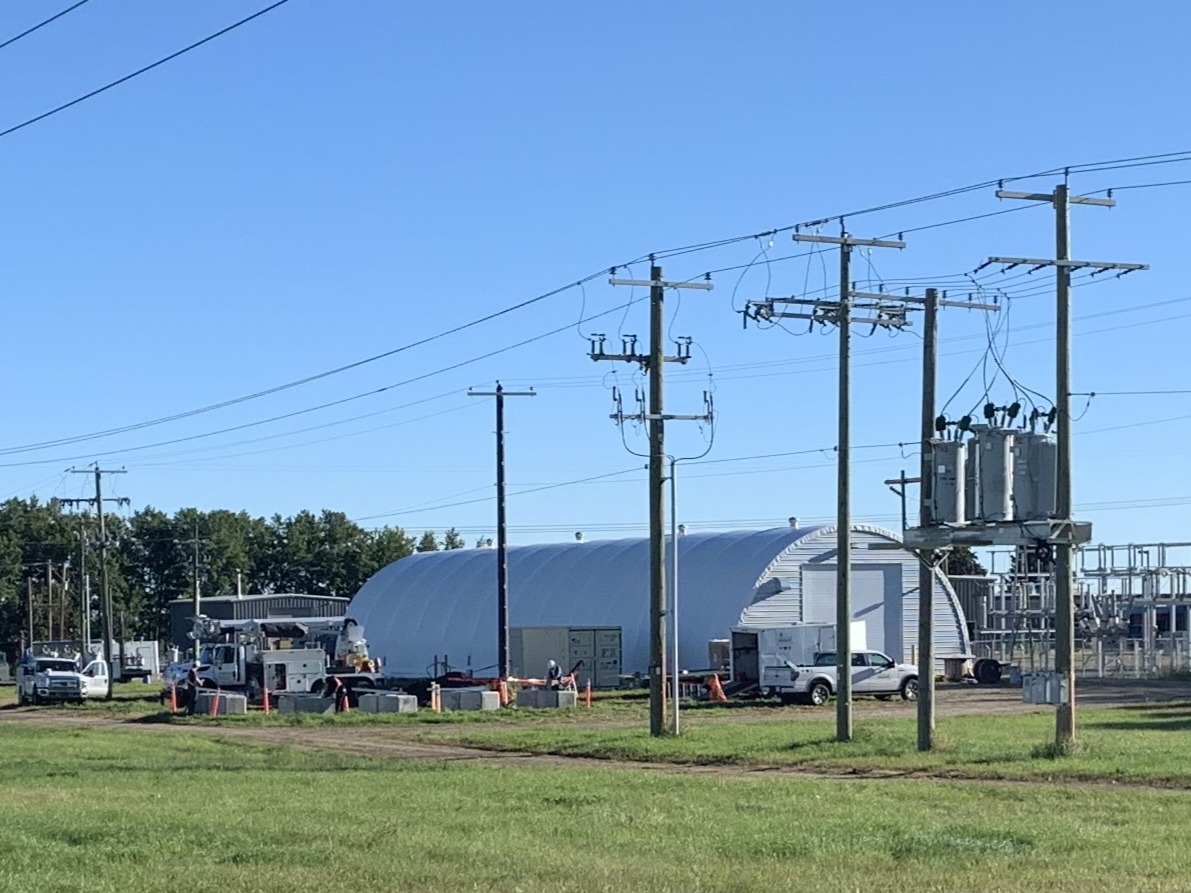
The Direct Current Secondary System Research Study: A partnership between FortisAlberta and the University of Alberta
Oct 6, 2025, 17:35 PMFortisAlberta is partnered with the University of Alberta on an innovative project with the potential to transform how electricity is delivered and used more efficiently by customers who require and use higher levels of electricity to power their homes, farms or businesses.
By exploring the conversion of alternating current (AC) to direct current (DC) secondary system technology, the project aims to further advance the reliability and load capacity of the secondary cables that connect customer properties to the primary distribution system. The result is improved service and cost-savings for customers.
Secondary cables are defined as the cables that are owned by customers that connect their residential, farm and/or business properties to the primary distribution grid. These secondary cables are connected to the 133,000 kilometres of primary conductor, or cables, throughout our service area.
Dan Plantinga, FortisAlberta Senior Design Specialist with our Capital Delivery team, explains that a key challenge electric utilities see today is strain on the system due to ever-increasing electricity usage, which also impacts the customers’ secondary system.
“Systems in place today may have been built 40 years ago. Without even getting into household items that require more power generally, when you think back, many homes used to have one TV and some main appliances. Now, a lot of families have multiple TVs and computers, technology that needs to be charged and other larger items that require electricity. In some areas, without this type of research and planning, aging infrastructure may be challenged by this increased load requirement.”
This means that as more Albertans increase electricity demand to their homes and explore technologies like electric vehicles (EVs) or solar, the need to adapt and be ready for Alberta’s electricity future is at the forefront of our business.
To meet this challenge, FortisAlberta is testing a leading-edge solution and one that hasn’t been explored to this degree in any electricity market in North America, converting the secondary system from AC to higher-voltage DC.
Monique Soboren, Senior Engineer, Standards and Projects with FortisAlberta, says that as they began this project, they first reached out to other larger electricity markets to see if this was being done.
“We called a lot of places and contacts throughout our industry, those with whom we’ve either worked with, or gotten to know as experts in their respective fields and discovered no one was really doing this. Even calling down to some industry peers in California, we figured this must be something they’re doing, but they aren’t there yet.”
The installation of DC conversion technology means a higher voltage with double the capacity can be passed through existing secondary infrastructure without necessarily needing to replace or upgrade cables. This benefit, says Dan, means far less, if any, invasive impact to properties where cables may be below ground. It can save time, a headache for property owners and, most importantly, cost to the impacted customer.
There are also cost-savings for FortisAlberta, which are ultimately passed along to our customers.
The testing for real-world application takes place at FortisAlberta’s Employee Development Centre, located in central Alberta, where a replica house built inside a shipping container was assembled to simulate a customer’s electricity use.
“We purchased used equipment like stoves, refrigerators, microwaves and lights to mimic household load and housed it in a large, fully-powered, shipping container,” says Dan.
“Testing meant developing practical situations where higher electricity load is required and then exploring the differences, results and, ultimately, benefits of the switch from AC to DC in each situation.”
So, what does this mean for FortisAlberta customers?
“For those we deliver electricity to, the benefits are clear,” Dan adds. “Right now, we may be limited by hard-to-access cable placement if a user needs additional power supply. With this technology, a DC converter could be installed at the transformer, which may serve up to eight customers. If you increase that DC capacity for one, you also increase potential capacity for the seven other properties served by that one transformer. If they choose, the neighbours have opportunity to invest in an AC to DC converter, as opposed to needing their secondary cables completely replaced, which would be far more costly and might involve their driveways, lawns or landscaping being impacted to access below ground cables.”
In short, instead of an expensive, and invasive, upgrade for one customer, increasing their power supply can now increase capacity, at far less cost to nearby neighbours.
The technology can also support Albertans connected to renewable options.
“We’re still exploring, obviously, but solar panels generate on DC voltage. There is potential for reduced cost to a consumer who’s invested in solar because the panels don’t require any AC to DC converters,” Dan explains. “There may be no need to alter the infrastructure if they add more load like there would be for someone requiring AC to DC.”
The exploration of DC secondary system technology ensures that FortisAlberta’s distribution infrastructure continues to provide industry-leading service for our more than half-a-million farm, business and residential customers as their electricity needs, and the electricity needs of all Albertans, evolve.
“At the end of the day,” says Dan, “we’re here to serve our customers. This is something that we see doing exactly that. Our team is always exploring ways to build on our successes and the successes of FortisAlberta itself. I feel it’s what we do here every day.”
FortisAlberta’s own Monique Soboren, Senior Engineer, will be a key presenter at Connector Sessions, taking place at the University of Alberta on October 16.

